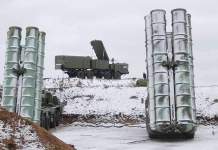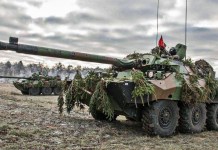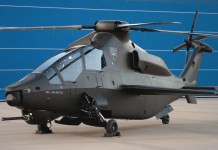A top US military commander has said that Russia could field its most potent and quietest nuclear attack submarines in two years to maintain a near-constant presence off US coasts.
The commander of the US NORTHCOM, Gen. Glen VanHerc, appeared before the Senate Armed Services Committee on March 23.
In response to questions from Senator Joni Ernst (R-Iowa) about the threat of Chinese and Russian cruise missile submarines operating close to the US mainland, VanHerc said that Russia has been deploying its Yasen-class nuclear cruise missile attack boats more frequently in recent years.
“[The risk is] absolutely increasing. Within the last year, Russia has also placed their [Yasens] in the Pacific,” he said. “Now, not only the Atlantic, but we also have them in the Pacific, and it’s just a matter of time – probably a year or two – before that’s a persistent threat, 24 hours a day. That impact has reduced decision space for a senior national leader in a time of crisis.”
Yasen-class, also known as Project 885, is Russia’s newest line of nuclear-powered cruise missile submarines and among the most capable submarines in the world.
In the words of Edward Geist of the US-based RAND Corporation, Yasen-class submarines are “the crown jewel of the contemporary Russian Navy and perhaps the pinnacle of present-day Russian military technology.”
Yasen-Class Submarines
Also known by their NATO reporting name Severodvinsk class, the 13,800-ton Yasen-class submarine was designed by the Malakhit Marine Engineering Bureau and built by Sevmash Shipyard in Severodvinsk.
There is also an improved variant, the Yasen-M, which features new sensors, new quieting technology, and a nuclear reactor updated to make less noise.
The Yasen-class submarines were designed to attack carrier battle groups and could destroy hostile ballistic missile submarines, attack submarines, and ships. The Yasen-Ms can attack coastal targets, such as naval bases and ports.
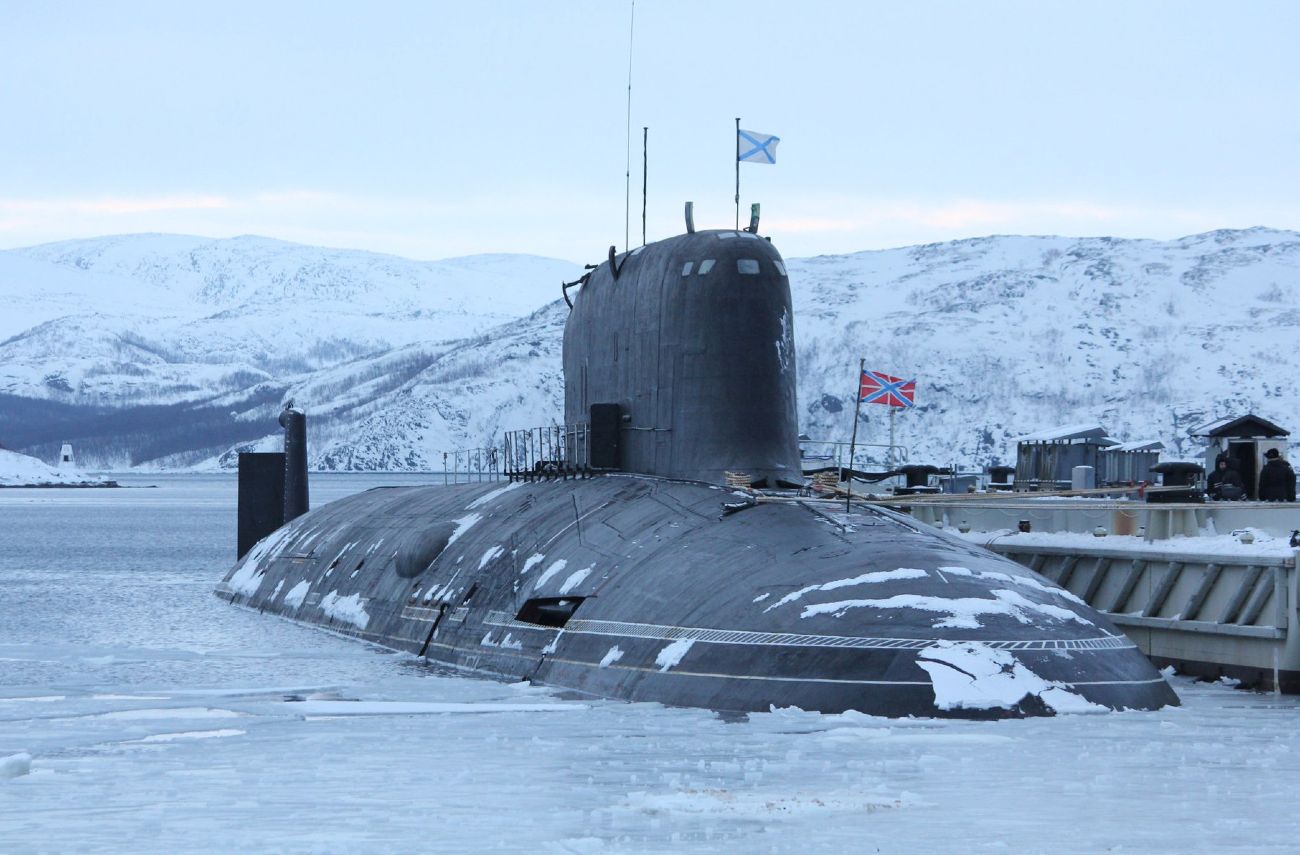
To strike the enemy carriers, the Yasen class submarines carry the (3M55) Onik missiles with a range of 320 nautical miles (or 592.64 kilometers).
In contrast, in their land-attack role, the submarines carry the (3M14K) Kalibr missiles with a range of 1,600 nautical miles (2963.2 kilometers). The Oniks can also be used for land-attack purposes.
A Yasen-class submarine can attack the US East Coast from the mid-Atlantic with these missiles.
The Yasen-class submarines have eight СМ-346 complex (3Р-14В) vertical launch tubes for Onik and Kalibr cruise missiles. The system can launch missiles from both surfaced and submerged positions of the submarine.
The upgraded Yasen-M class submarine can also fire 3M22 Zircon hypersonic anti-ship and land-attack missiles, which are said to have a range of 1000 kilometers and speeds of Mach 8.
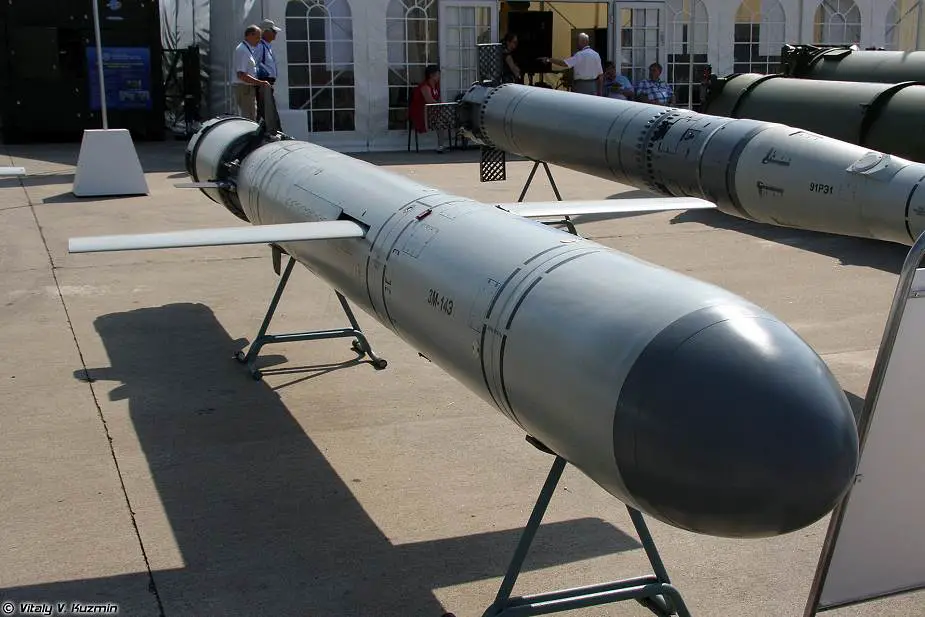
Also, there are eight torpedo tubes comprising four standard-diameter 533-millimeter torpedo tubes and four 650-millimeter torpedo tubes, which can accommodate homing torpedoes and 3M54 Klub missiles, as well as mines.
The submarines also have six countermeasure launchers carried externally under the casing, four placed forward above the torpedo tubes, and two aft of the VLS. These launchers are believed to carry a small 324-millimeter torpedo similar to the ‘Barrier’ system carried by TYPHOON and AKULA boats. These torpedoes are hydroacoustic decoys to divert incoming torpedoes.
US Military Impressed By Yasen-class Submarine
So far, three Yasen class submarines have been commissioned in the Russian Navy, namely the K-560 Severodvinsk, which is the lead boat of the class, followed by the K-561 Kazan and K-573 Novosibirsk. The Kazan and Novosibirsk are the improved Yasen-M variants.
As per Russian media reports, the Russian Navy intends to construct ten Yasen-class submarines, with the fourth K-571 Krasnoyarsk scheduled to enter service later this year.
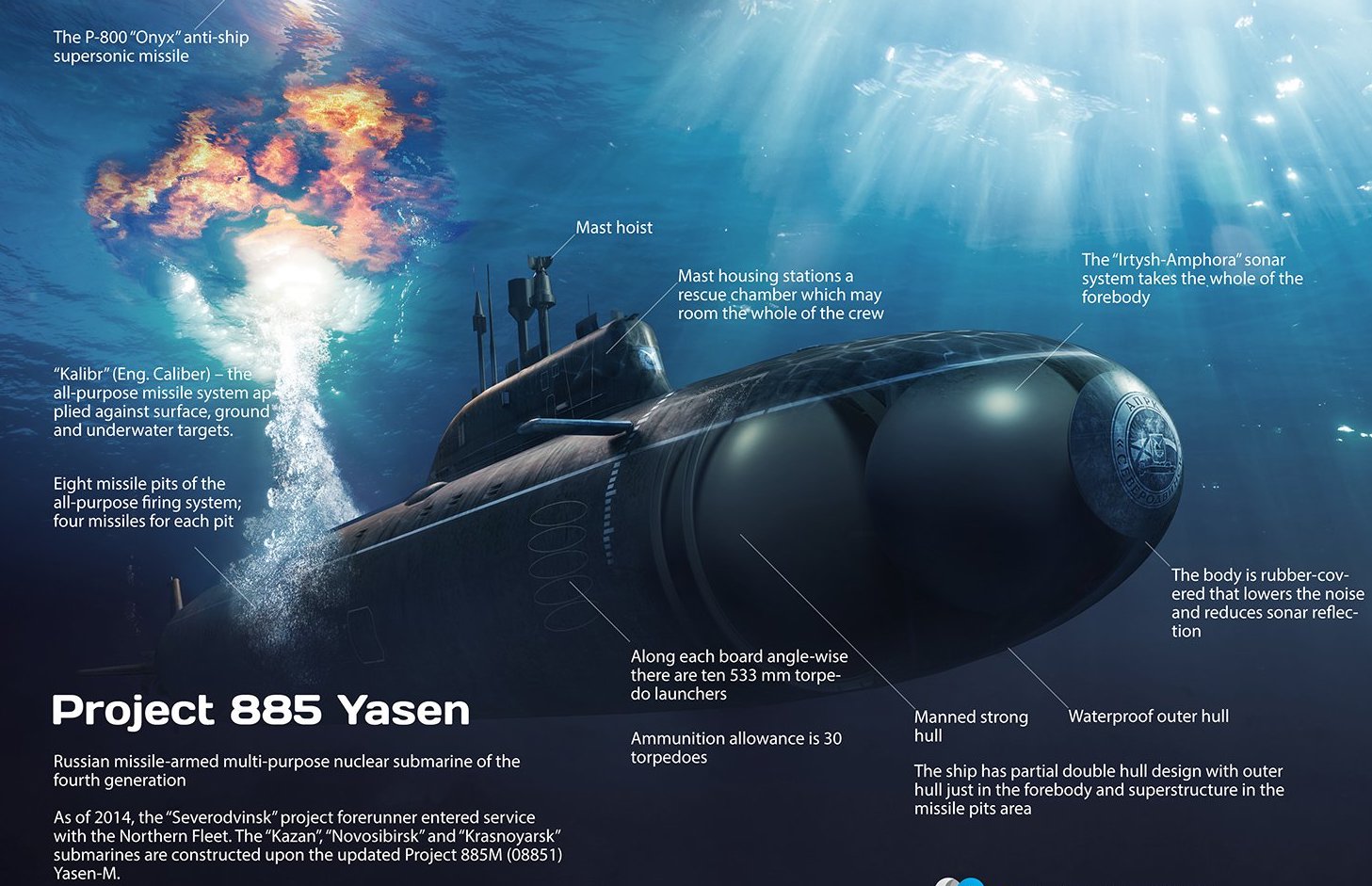
The Yasen-class submarines’ capability to hit land-based targets is of particular concern to Western military experts and officials alike.
“For the first time in Russian history, the Russian Navy can lay off a European coast or in some cases even the continental United States and present a land-attack cruise missile threat … with very highly precise weapons,” Michael Petersen, director of the Russia Maritime Studies Institute at the US Naval War College, told Insider in 2020.
This new ability worried NATO military leaders, who perceived it as a threat to physical infrastructure, such as ports, that would be critical during wartime for supply and reinforcement.
Also, the Yasen-class submarine is the quietest of Russian-made submarines, as per a 2009 report by the US Office of Naval Intelligence (ONI) assessment.
They are also amongst the most capable submarines in the world. For instance, in 2014, the officer responsible for US Naval Sea Systems Command submarines said he admired the K-560 Severodvinsk and put its replica in his office.
“We’ll be facing tough potential opponents. One only has to look at the Severodvinsk,” Rear Adm. Dave Johnson said at an October conference. “I am so impressed with this ship that I had Carderock [naval test center] build a model from unclassified data.”
Johnson was correct. In 2019, Pentagon officials told “60 Minutes” that the Severodvinsk sailed into the Atlantic in 2018 and could evade US efforts to find it for weeks.
Yasen-Class Submarines Pose Grave Threat
Russia has invested heavily in modernizing its submarine fleet, which has grown to 58 vessels presently. The focus on submarines has also brought back Cold War-era concepts of operations concerning the North Atlantic: ‘bastions’ and ‘bastion defense.’
Bastions are those maritime zones where Russia deploys its at-sea nuclear deterrent. The Russian Navy has to defend its bastions by denying the NATO warships access to the region beyond these bastions to keep these nuclear-capable submarines safe.
The ‘bastion defense’ perimeter stretches to the Greenland-Iceland-UK gap (GIUK gap). In times of crisis or war, US naval assets, armed with Tomahawk cruise missiles, could cross the GIUK gap to hit high-value targets inside Russia. The Russian tactical submarines’ job is to deny US naval assets access beyond the GIUK gap.
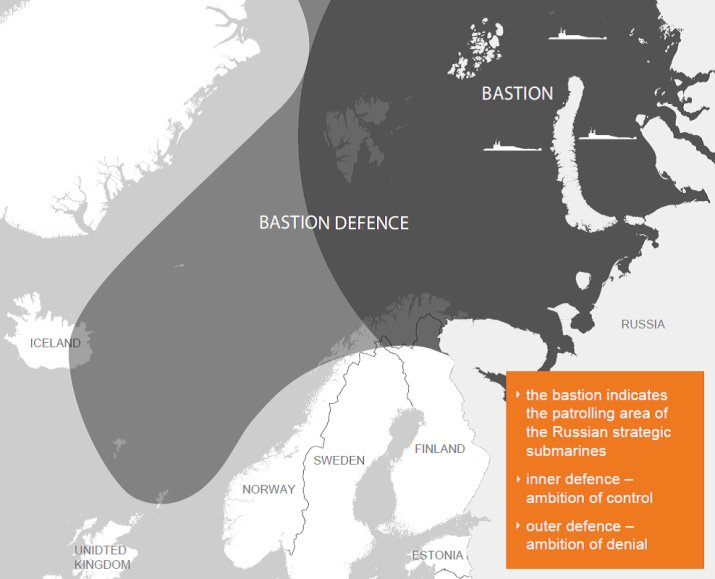
Furthermore, if the Russian submarines can pass through this gap, they could potentially cut off Europe from North America during wartime, threaten the US Coast, and maybe even track down a US ballistic missile submarine.
The range at which the Yasen and Yasen-M submarines can strike targets on land means that they do not necessarily have to try and break through the GIUK gap.
Ine Eriksen Søreide, who served as Norway’s defense minister from 2013 to 2017, said during a Hoover Institution event in July last year that with the help of Yasen-class submarines, Russia “can now effectively shut off the Greenland-Iceland-UK Gap and that also hampering the reinforcements to Europe in a situation of crisis.”
So, the land-attack capability of the Yasen-class submarines poses a real challenge to Western assumptions that their key challenge for anti-submarine warfare against Russian submarines is to stop them at the GIUK gap to defend Atlantic Sea Lines of Communications (SLOCs).
- Contact the author at tanmaykadam700@gmail.com
- Follow EurAsian Times on Google News


